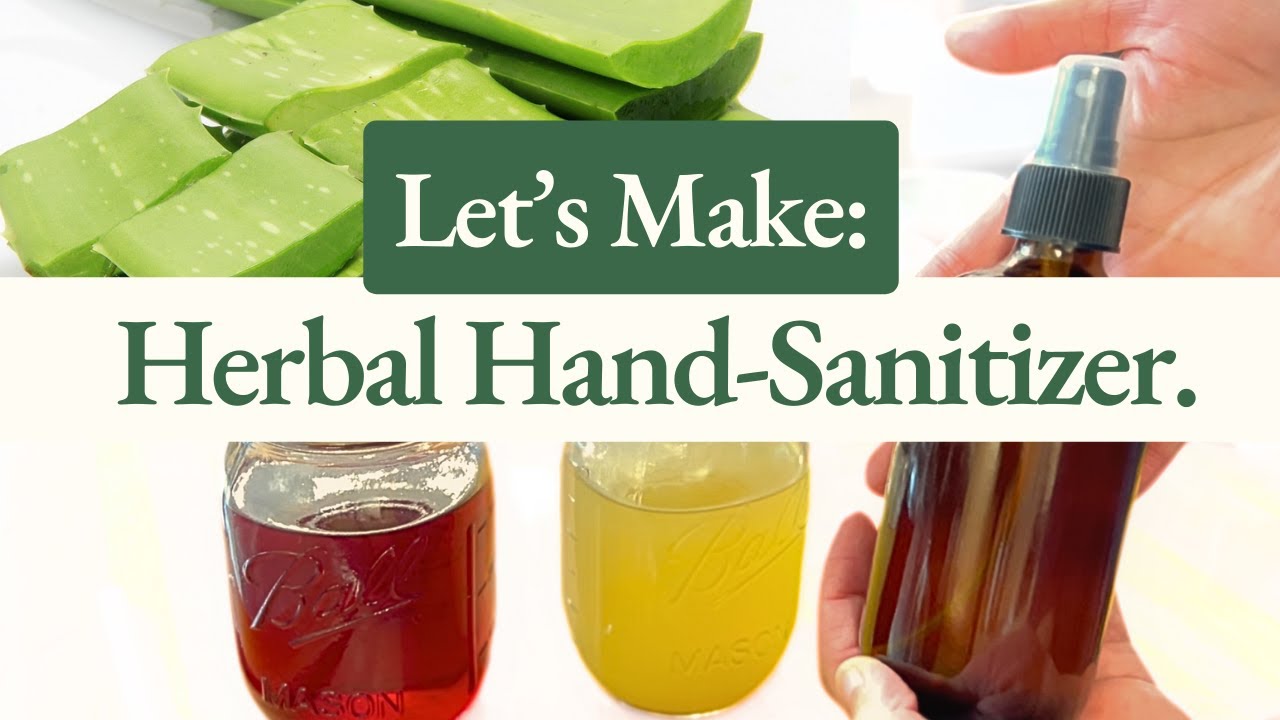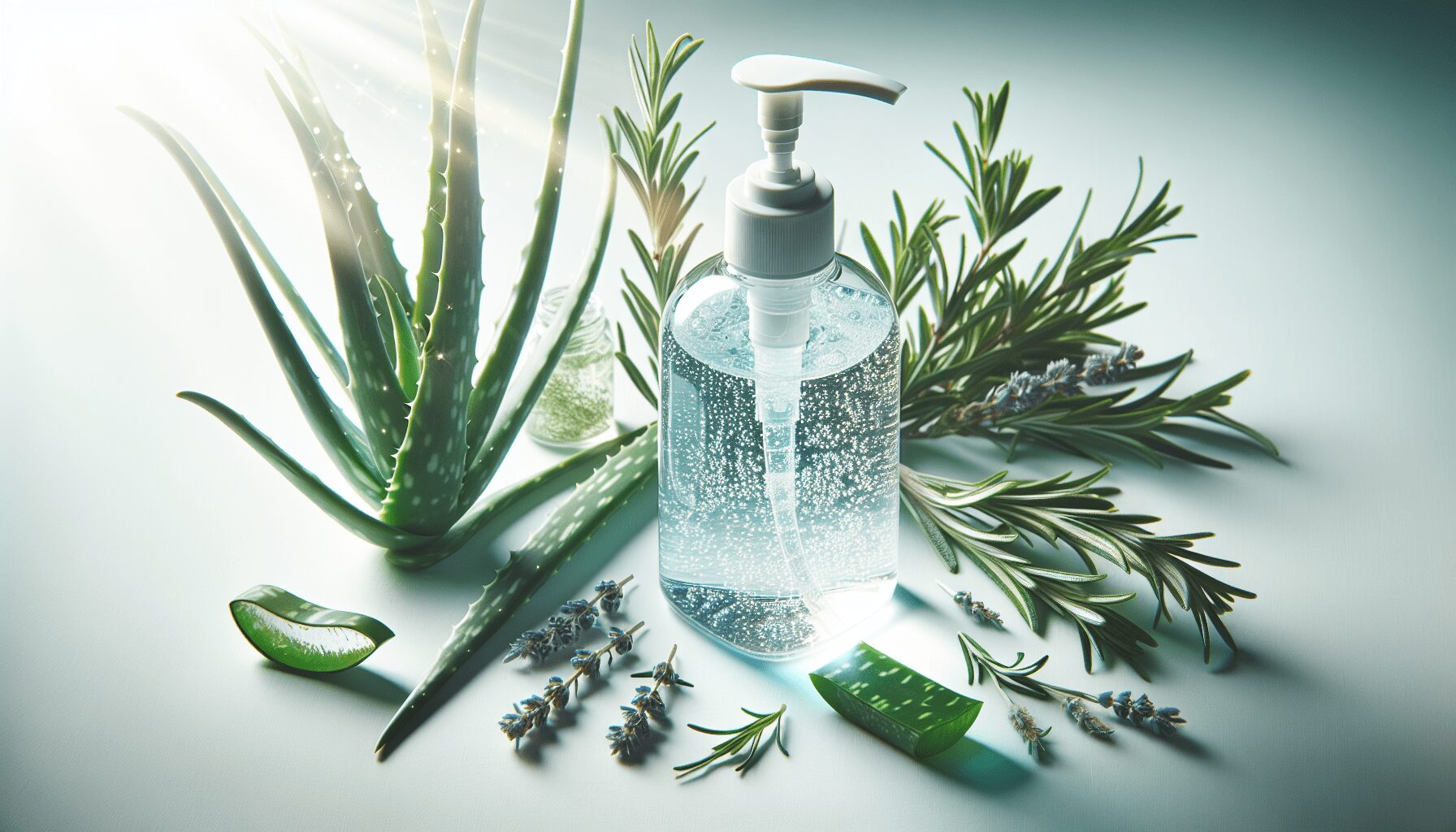Grab your apron and head to the kitchen as you embark on a fun and practical adventure, crafting your very own herbal hand sanitizer with aloe vera. Today’s guide, inspired by The Acadian Garden & Apothecary, shares a fantastic recipe that not only keeps your hands clean but also moisturized and soothed with natural ingredients.
You’ll learn how to utilize herbal infusions like Usnea and St. John’s Wort, paired with the healing properties of aloe vera, to create a potent and gentle hand sanitizer. By the end, you’ll have a handy product that’s both effective and delightful to use, all while learning a bit about natural herbal remedies.
Gather Your Ingredients and Supplies
List of Ingredients
When making your own herbal hand sanitizer, you’ll need specific ingredients to ensure the mixture is effective and gentle on your hands. Here’s what you’ll need:
- 120 proof Ethanol: The key sanitizer component.
- Usia tincture: Known for its antibacterial properties.
- St. John’s Wort tincture: With anti-inflammatory and pain relief qualities.
- Aloe Vera gel: To soothe and moisturize your skin.
- Glycerin: Adds moisture and extends the shelf life.
- Tea Tree Oil: Offers additional antimicrobial benefits.
Essential Tools and Utensils
To prepare your DIY hand sanitizer, having the right tools is crucial for efficiency and safety:
- Clean Mason Jars: For storing and mixing infusions.
- Measuring Spoons and Cups: To ensure accuracy in proportions.
- Nut Milk Bag or Cheesecloth: For straining the herbal infusions.
- Sharp Knife and Cutting Board: For handling Aloe Vera leaves.
- Glass Bottles with Spray Nozzles: For storing the final product.
Safety Precautions
When making your own hand sanitizer, it’s essential to prioritize safety:
- Work in a Clean Environment: Ensure your workspace is sanitized to avoid contamination.
- Wear Gloves and Eye Protection: Especially when handling ethanol and essential oils.
- Keep Ingredients Out of Reach of Children: Particularly strong ethanol, which can be hazardous.
Understanding the Benefits of a Herbal Hand Sanitizer
Importance of Hand Hygiene
Hand hygiene is vital for preventing the spread of infectious diseases. Regular use of hand sanitizer, especially when soap and water aren’t available, can significantly reduce the transfer of germs and bacteria.
Advantages of Herbal Ingredients
Herbal ingredients are not only effective but also offer benefits that synthetic components often lack. They are generally gentler on the skin, provide additional nourishment, and come with therapeutic properties such as antibacterial and anti-inflammatory effects.
Why Aloe Vera?
Aloe Vera is a powerhouse ingredient known for its soothing and moisturizing properties. It helps maintain skin hydration, reduces redness, and can soothe irritations caused by frequent handwashing or sanitizer use.

This image is property of i.ytimg.com.
Preparing the Herbal Infusions
What is Usia?
Usia, commonly known as Old Man’s Beard, is a lichen found in northeastern America. It’s renowned for its antibacterial properties and is traditionally used in herbal medicine for treating skin infections and promoting wound healing.
Benefits of St. John’s Wort
St. John’s Wort is well-known for its mood-enhancing properties, but it has significant skin benefits too. It’s particularly effective in reducing inflammation, promoting healing of cuts and burns, and providing pain relief.
Step-by-Step Guide to Herbal Infusions
- Prepare Your Ingredients: Measure out your dried Usia and St. John’s Wort.
- Combine with Alcohol: Place the herbs in a mason jar and cover with 100 proof vodka or another high-proof alcohol.
- Seal and Store: Seal the jar tightly and store it in a cool, dark place for several weeks, shaking it occasionally to evenly distribute the herbs.
- Strain the Mixture: After several weeks, use a nut milk bag or cheesecloth to strain the herbs from the liquid, leaving you with a potent herbal infusion.
Storing and Straining Infusions
Store your strained infusions in clean, airtight jars away from direct sunlight. Properly labeled jars will help you keep track of their contents and infusion date. Always use sterilized utensils to avoid contamination.
Extracting Aloe Vera Gel
Handling Aloe Vera Leaves
Select healthy, thick Aloe Vera leaves. Trim off the prickly edges and base before you cut the leaf in half lengthwise to expose the gel.
Methods to Extract Gel
- Slicing: Use a knife to carefully slice the leaf open and scoop out the gel with a spoon.
- Blending: Blend the gel to get a smooth consistency.
- Straining: Use a nut milk bag to remove any solid pieces, ensuring a smooth gel.
Common Mistakes to Avoid
- Not Draining Latex Sap: The yellow latex can cause skin irritation, so always allow the leaves to drain properly.
- Over-Blending: This can incorporate too many bubbles, making your gel less effective for mixing.
- Improper Storage: Fresh Aloe Vera gel needs to be stored in the fridge to maintain its efficacy.
Storing Aloe Vera Gel for Future Use
Store extracted gel in an airtight container in the refrigerator. If possible, add a few drops of Vitamin E oil to extend its shelf life.

Mixing the Herbal Hand Sanitizer
Measuring Ingredients
Accurate measurement is essential for an effective hand sanitizer. You will need:
- ½ cup of 120 proof ethanol
- 10 tsp Usia tincture
- 8 tsp liquid Aloe Vera
- 4 tsp St. John’s Wort tincture
- 2 tsp glycerin
- 20 drops of Tea Tree Oil
Proportions and Adjustments
Feel free to adjust the proportions slightly based on personal preference or ingredient availability. However, ensure the final product contains at least 60% alcohol to be effective.
Step-by-Step Mixing Process
- Combine Alcohol and Tinctures: In a clean glass bowl, mix the ethanol with Usia and St. John’s Wort tinctures.
- Add Aloe Vera and Glycerin: Stir in the Aloe Vera gel and glycerin thoroughly.
- Incorporate Essential Oils: Add the tea tree oil, mixing well until evenly distributed.
- Bottle the Mixture: Pour the hand sanitizer into a glass bottle with a spray nozzle using a funnel for ease.
Adding Essential Oils
Why Tea Tree Oil?
Tea Tree Oil is beloved for its potent antimicrobial properties. It’s effective against bacteria, viruses, and fungi, making it a perfect addition to your hand sanitizer.
Alternative Essential Oils
You can also use other essential oils with antimicrobial properties, such as lavender, eucalyptus, or peppermint oil. They not only boost efficacy but add a pleasant scent.
Benefits and Ratios
Essential oils like lavender can soothe the skin, while peppermint can provide a refreshing sensation. A ratio of about 20 drops per 8 ounces of hand sanitizer is generally safe and effective.

Bottling Your Hand Sanitizer
Choosing the Right Container
Select containers that are easy to use, such as glass bottles with spray nozzles. These are user-friendly and ensure a uniform application.
How to Properly Label
Label your bottles clearly with the name of the product, ingredients, and the date it was made. This helps track the shelf-life and ingredients used.
Storing Tips for Longevity
Store your hand sanitizer in a cool, dark place to maintain its potency. Avoid places with direct sunlight or high temperatures, which can degrade the ingredients.
Using Your DIY Herbal Hand Sanitizer
How to Apply Correctly
Apply a generous amount to the palm of one hand. Rub your hands together, covering all surfaces of your hands and fingers until they are dry.
When to Use It
Use your herbal hand sanitizer when soap and water aren’t available, especially after touching frequently-touched surfaces, handling money, or being in public places.
Combining with Regular Handwashing
While hand sanitizer is effective, it’s not a complete substitute for washing hands with soap and water. Use it in conjunction with regular handwashing for optimal hand hygiene.
Troubleshooting and FAQs
Common Issues and Fixes
- Sanitizer Too Watery: Ensure correct proportions and add more Aloe Vera gel.
- Skin Irritation: Reduce the amount of essential oils or switch to a more soothing oil like lavender.
- Not Effective: Ensure the ethanol used is of at least 120 proof.
Safety and Storage FAQs
- How long can I store it? When stored properly, it can last several months.
- Is it safe for children? Yes, but supervise use and ensure they don’t ingest it.
Effectiveness and Shelf-life
Your DIY herbal hand sanitizer should be effective for about six months if stored properly. Ensure it remains sealed and kept in a cool, dark place to extend its shelf life.
Conclusion
Recap of Steps
Making your own herbal hand sanitizer involves gathering the right ingredients, preparing herbal infusions, extracting Aloe Vera gel, and carefully mixing all components.
Personal Experiences
Creating DIY products allows you to control what goes into them, ensuring you avoid harmful chemicals and reap the benefits of natural ingredients.
Encouragement to Try at Home
Go ahead and try making your own herbal hand sanitizer at home! It’s a fulfilling process, and you’ll enjoy the comfort and peace of mind knowing exactly what you’re applying to your skin. Plus, it’s a fun project to share with family and friends. Happy crafting!